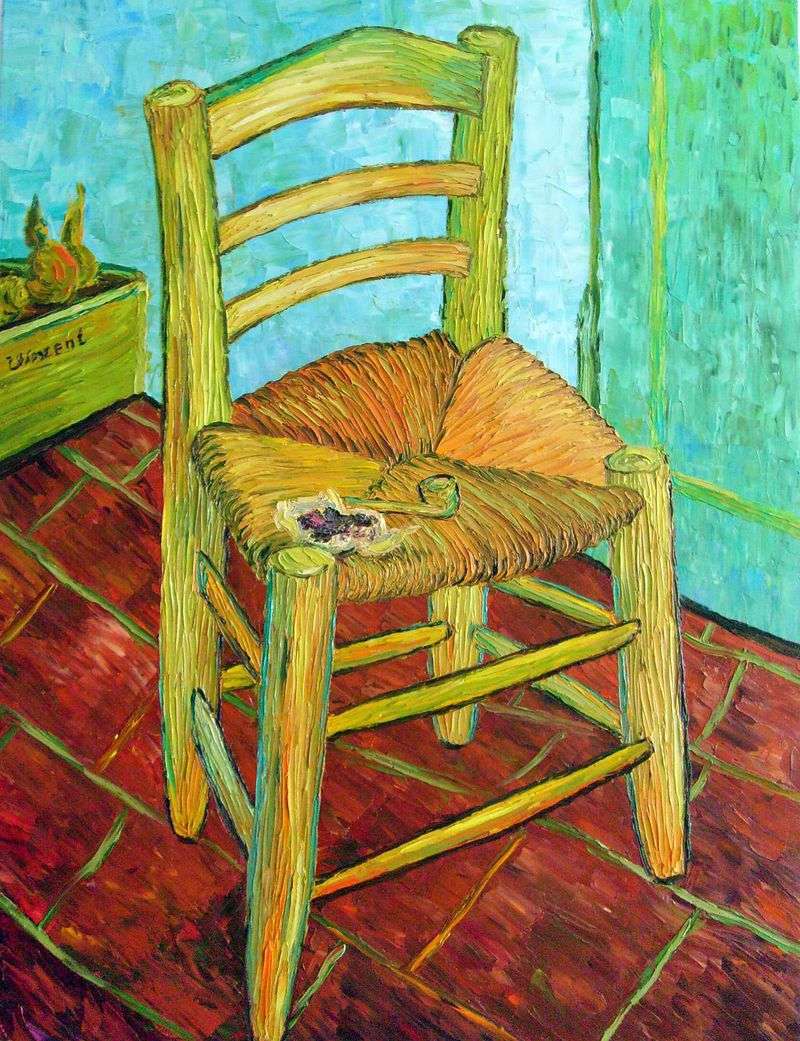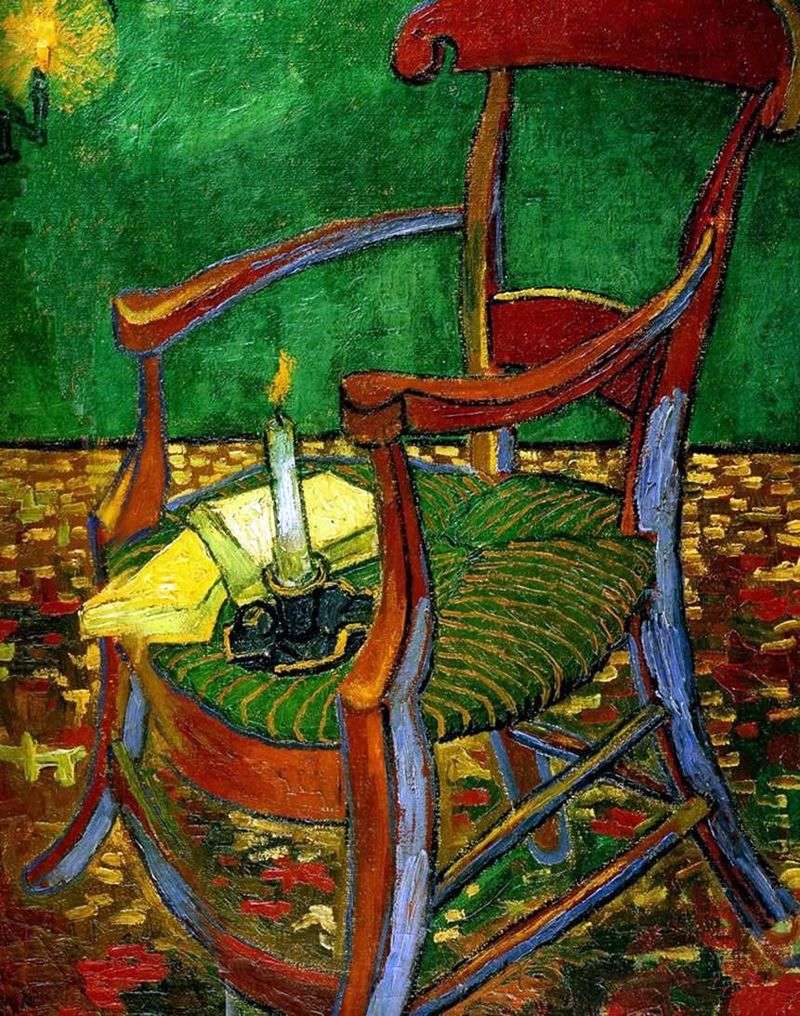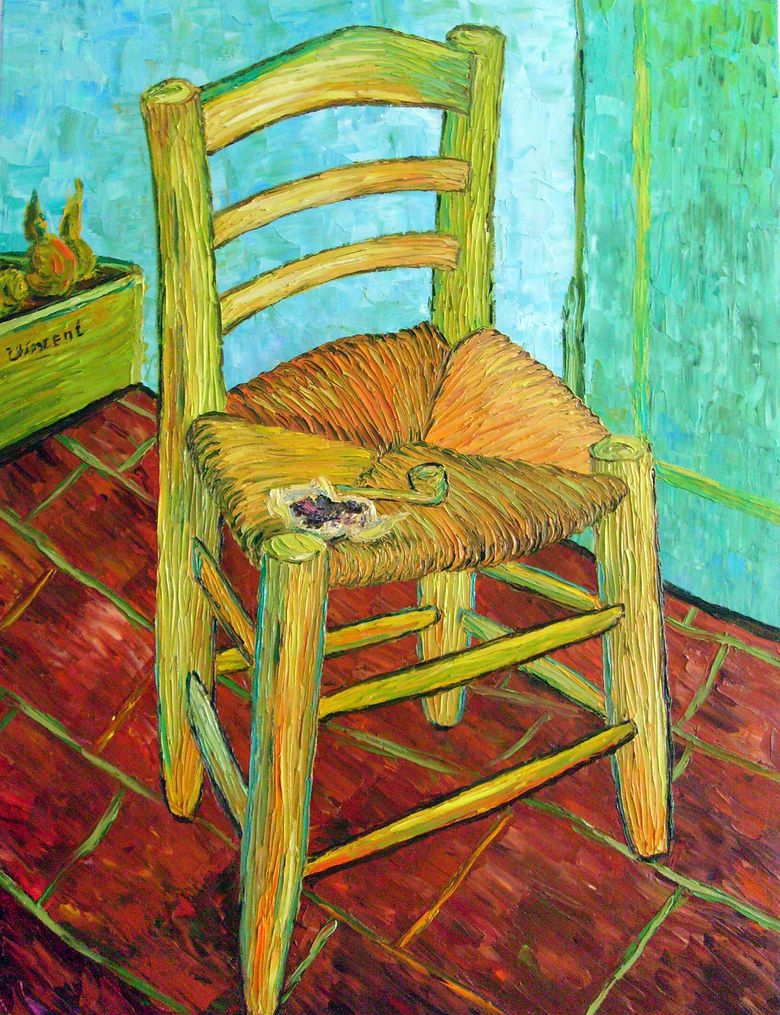
In early December 1888, Van Gogh began a couple of hanging paintings with Gauguin’s chairs and his own. These images are not just still lifes, but rather iconographies, recalling the allegorical use of motifs in a Dutch still-life of the seventeenth century.
The flame of a candle, for example, is ordinary for him, and symbolizes light and life. These paintings also represent indirect portraits. On the chair of Gauguin Van Gogh placed two books that can be recognized by the color of their cover as modern French novels. On his chair he put the phone and the pouch, and in the background there are sprouted bulbs. The Gauguin’s chair is a night scene, and his own daylight.
In this pair of paintings there is also another subtext. In 1883, Van Gogh told his brother the story he read about the English writer Charles Dickens and illustrator Luke Fields. When Dickens died, Fields made a drawing that was printed in The Graphic, an illustrated edition whose engravings were collected by Van Gogh.
The drawing showed Dickens’s office and now an empty chair. Van Gogh explained to his brother that this image meant to him. He saw it as a symbol of the loss of the great pioneers of literature and graphic illustration through death. In addition, these people – especially artists who created images that accompanied and illustrated modern literature – worked, as Van Gogh believed, in one spirit.
Their artistic community and common efforts provided Van Gogh with a model for his own dream of a new association of artists, based on the “Workshop of the South”, which was founded upon the arrival of Gauguin in Arles.
 Vincent’s chair and his smoking pipe (Vincent’s chair with a pipe) by Vincent Van Gogh
Vincent’s chair and his smoking pipe (Vincent’s chair with a pipe) by Vincent Van Gogh The chair of Gauguin by Vincent Van Gogh
The chair of Gauguin by Vincent Van Gogh Still life with a bow and a drawing board by Vincent Van Gogh
Still life with a bow and a drawing board by Vincent Van Gogh Self-portrait with bandaged ear and pipe by Vincent Van Gogh
Self-portrait with bandaged ear and pipe by Vincent Van Gogh Still Life: French Novels by Vincent Van Gogh
Still Life: French Novels by Vincent Van Gogh The Garden of the Poet (Garden of Poets) by Vincent Van Gogh
The Garden of the Poet (Garden of Poets) by Vincent Van Gogh Wheatfield under a cloudy sky by Vincent Van Gogh
Wheatfield under a cloudy sky by Vincent Van Gogh Chaise de Vincent avec son tube – Vincent Van Gogh
Chaise de Vincent avec son tube – Vincent Van Gogh